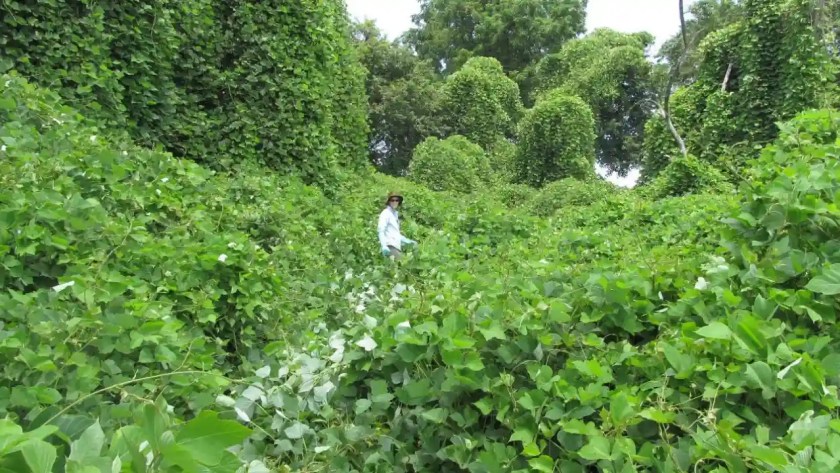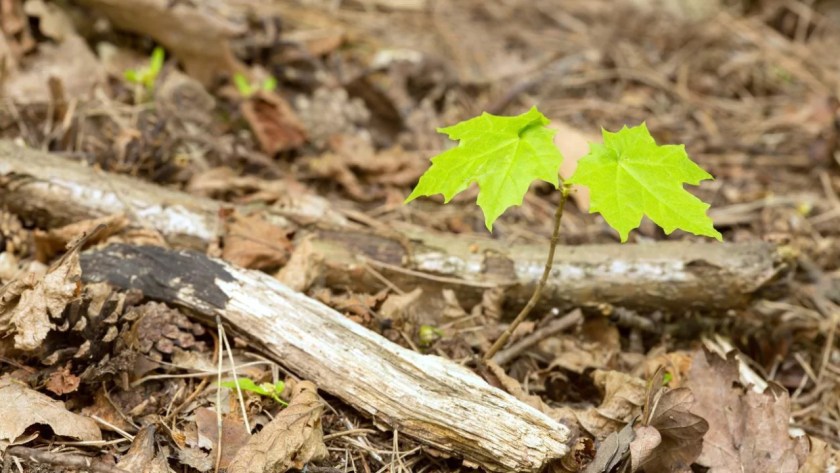All trees grow in every season, yet growth will vary based on the climate and time of year. This variation associated with the exposure to temperature and available water to the tree. Oak trees still grow and are healthy even the winter.
However, they cannot grow in temperatures that are below freezing like in Dakota and Minnesota.
If winter temperatures are slightly above freezing, however, trees will still grow. For example, most all of California.
Do Trees Grow In Winter?

It is important to plant trees when the weather is ideal.
Plants need sunlight, water, and good soil to have the best chance to develop. We also know that different seasons may have varying weather and that will affect how trees develop.
Some areas get temperatures lower than the freezing point during the winter season.
In this case – The water around the roots of a tree will freeze and the tree will not be able to take in that water. Additionally, there will not be enough sun necessary to grow and get enough energy for that tree for most of the day.
The tree may or may not survive winter, especially if the plant has not developed its root network properly.
On the other hand, some areas do not experience frigid temperatures during the winter.
Sure, temperate regions may see daytime temperature around 50 degrees but that is still much better and more likely to allow trees to survive than freezing temperatures.
So, if soil is good with nutrients, and proper watering that continues, all trees will probably survive.
Nevertheless, some trees will seem to grow no matter how cold it gets, and some of those trees include:
- Dwarf Juniper
- Willow
- Cedar
- Wintergreen
- Oak
- Beech trees
- Witch hazel trees
Is It Wise To Plant Trees In Winter?

Planting a tree in winter can be a good or bad choice.
It depends on where you live as some places have mild winters compared to others who experience extreme winters.
If you live where there is heavy winter snows, then planting or transplanting your trees will not be a wise choice.
On the other hand, some people may argue that planting your trees in winter, unless it is too milder, is usually the best decision especially if you live in Florida and Alabama Jack in the state of the conditions.
Actually, it is ideal to plant trees from November through March in some parts.
In some areas, the tree itself and soil around it might be stunted in growth and seem dormant but the roots will remain alive which will provide the plant with the much-needed life.
By the time spring shows up at your door step, the roots will have been spread just right, and the tree will better acclimated to the depending on your conditions for growth.
Also, take into consideration that winter has little growing vegetation.
So your trees will not be really in competition for nutrients in the soil, as weeds will not grow.
Because when winter is gone, the summer and spring growth management will be high due to establishment of weed growth.
| Region | Tree To Plant | Time To Plant |
|---|---|---|
| Texas | Live oaks Cedar Elm Texas Mountain Laurel | October through March |
| Louisiana | Maple Sweetgum Witch Hazel | November or December |
| Florida | Willow Red Cedar | Anytime |
| Georgia | Red oaks Maples Sycamores Weeping willows | November through January |
| Alabama | Magnolia Trees Bald Cypress | November through March |
| South Carolina | Oak Tree Fir Trees | December or January |
When Do Trees Grow Faster?

Several factors determine the growth rate of trees.
These factors include:
- the region
- tree species
- soil type
- and water availability
Due to the fact that the tropical regions are not affected by the seasons to the extent that we are, the trees in those areas are going to be green for most of the year.
However, it is absolutely true that trees grow more in the spring and summer.
In areas with distinct summer and winter seasons, trees are going to be more successful in the summer. All depending on the degree of sunlight, trees grow more in the spring and summer.
Sunlight plays a critical role in photosynthesis.
Thus, trees are happy to grow in the spring and summer months because they have more light for a longer duration of the day.
Factors That Limit Growth Of Trees In Winter

In addition to the sun being an obvious factor, there are many other factors that contribute to a tree’s growth especially in the wintertime.
In order for growth to occur, the tree needs water and nutrients to assist with living and managing its own growth.
If the soil is deficient in nutrients to support the tree, what would watering a tree do for it?
You can certainly water your trees during the winter time, however, the rainfall that occurs during the summer and spring replenishes the soil.
The rains during early summer contain copious amounts of nitrogen. This nitrogen is one of the most important minerals to promote tree growth.
Essentially – The energy from lightning breaks up the nitrogen molecules in the atmosphere. This releases nitrogen atoms that then are pushed together with oxygen to form nitrogen oxides. These oxides are then absorbed in the rain and then converted into nitrates.
Also, the trees shed their leaves during the fall/early winter to conserve energy.
This spent energy is then utilized to sustain the tree during this period of dormancy.
The leaves that fall also increasing increasing soil nutrients and thereby are another reason trees grow so well in the summertime.
When Is The Right Time To Plant Trees

In short, the time of year that is best for tree planting is based upon where you live.
If you are in a tropical area, trees can be planted all year. The major consideration is rainfall.
If you are in a cooler area with extreme winters and summers, you should have a different consideration for planting trees, which is to avoid planting trees in the cold.
This is where early spring becomes the best time to plant trees. Sunlight and moderate temperatures will be developing healthy leaves and solid roots during this time.
During the summer, your trees will use long days to produce food through photosynthesis even more.
When the winter does arrive, your trees will have developed enough maturity to protect themselves against the extreme temperatures. This simply requires mulching to provide for healthy groth.
But, if you are in a nonfreezing area, you can definitely hatch trees in the early summer as well.
For example, in Florida, planting trees can be done in the early winter. If your trees are growing properly, you will demonstrate how to focus on your trees in cooler temperatures (but below freezing).
Can You Speed Tree Growth In Winter?

Adding a modest amount of mulch to your tree bed creates an insulating layer to support your tree in winter conditions.
This would be especially beneficial for younger seedlings. As well, it is helpful to water the trees regularly.
It is essential to give your tree plant the appropriate environment as it pertains to it growing.
You can use generic fertilizer to help with the phosphorus levels if the soil is not fertile enough, but remember, different tree species need different care.
Final Thoughts
In general, the growth of a tree is contingent on the season.
Sunlight and water are both crucial factors of photosynthesis therefore trees prosper the most in the spring season.
In areas you may have freezing temperatures, plant your trees before a winter is upon you.
If your trees are planted in winter, plan to care for your trees by making sure the soil is nutrient rich.
A small bit of mulch will help the tree roots survive with freezing temperatures.